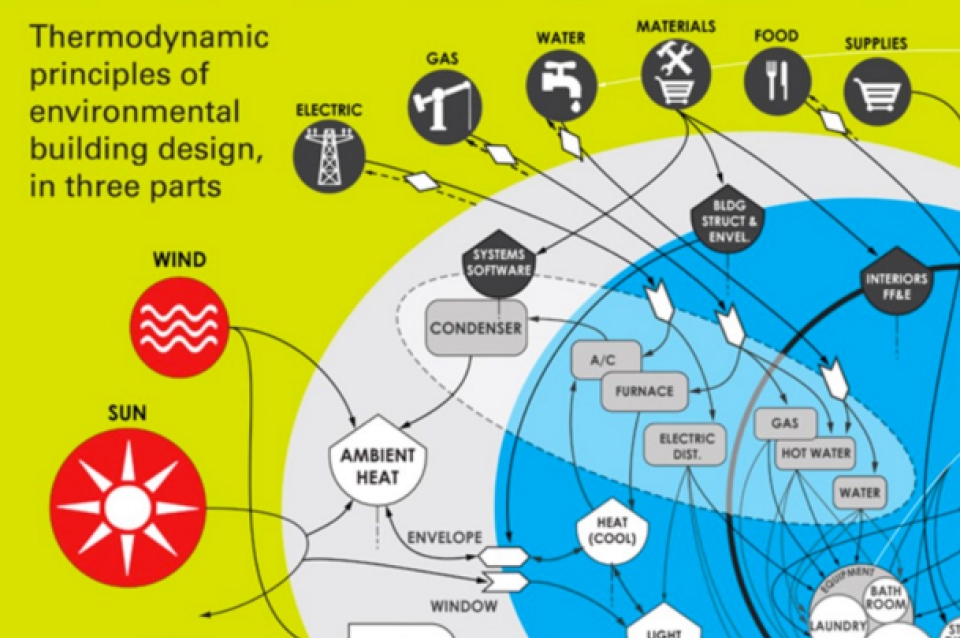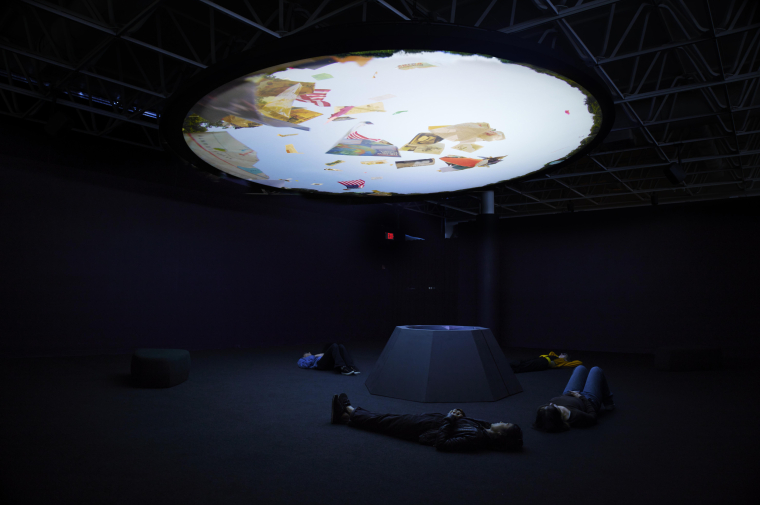February 11, 2016
Stuart Weitzman School of Design
102 Meyerson Hall
210 South 34th Street
Philadelphia, PA 19104
Get the latest Weitzman news in your Inbox
Areas
Media Contact
Michael Grant
mrgrant@design.upenn.edu
215.898.2539
In his new book Architecture and Systems Ecology, William Braham, Professor of Architecture and Director of both the Master of Environmental Building Design and of the TC Chan Center for Building Simulation and Energy Studies, investigates how to design sustainably, looking to utilize tenets of systems ecology to produce buildings that are efficient and meet the needs of 21st-century cities. Drawing from historical precedents, Braham clearly illustrates the steps architects can use to obtain greater returns. Following is an excerpt from Braham's introduction.
Modern buildings are both wasteful machines that can be made more efficient and instruments of the massive, metropolitan system engendered by the power of high-quality fuels. A comprehensive method of environmental design must reconcile the techniques of efficient building design with the radical urban and economic reorganization that we face. Over the coming century, we will be challenged to return to the renewable resource base of the eighteenth-century city with the knowledge, technologies, and expectations of the twenty-first century metropolis.
In [this book], we review the architectural implications of the energy systems language developed by H. T. Odum, an American ecologist known for his pioneering work on ecosystem ecology. Odum’s energy systems language provides a holistic context for the many kinds of performance already evaluated in architecture—from energy use to material selection and even to the choice of building style. It establishes the foundation for environmental principles of design that embrace the full complexity of our current situation.
The first section in Architecture & Systems Ecology: Thermodynamic Principles of Environmental Building Design, in three parts (Routledge, 2016) introduces the thermodynamic principles of self-organization as they occur in the natural and built environments. The second and central section on buildings applies these principles in three parts—shelter, setting, and site—to explain building performance at three nested scales of activity: the thermodynamic characteristics of the building as a shelter from the climate; the demands of the building as a setting for work and living; and the building as an intensification of its location in urban and economic production hierarchies. The book’s third and final section on design explores how the thermodynamic narratives of wealth and power, waste and efficiency contribute to the design of buildings.


 Expand Image
Expand Image



